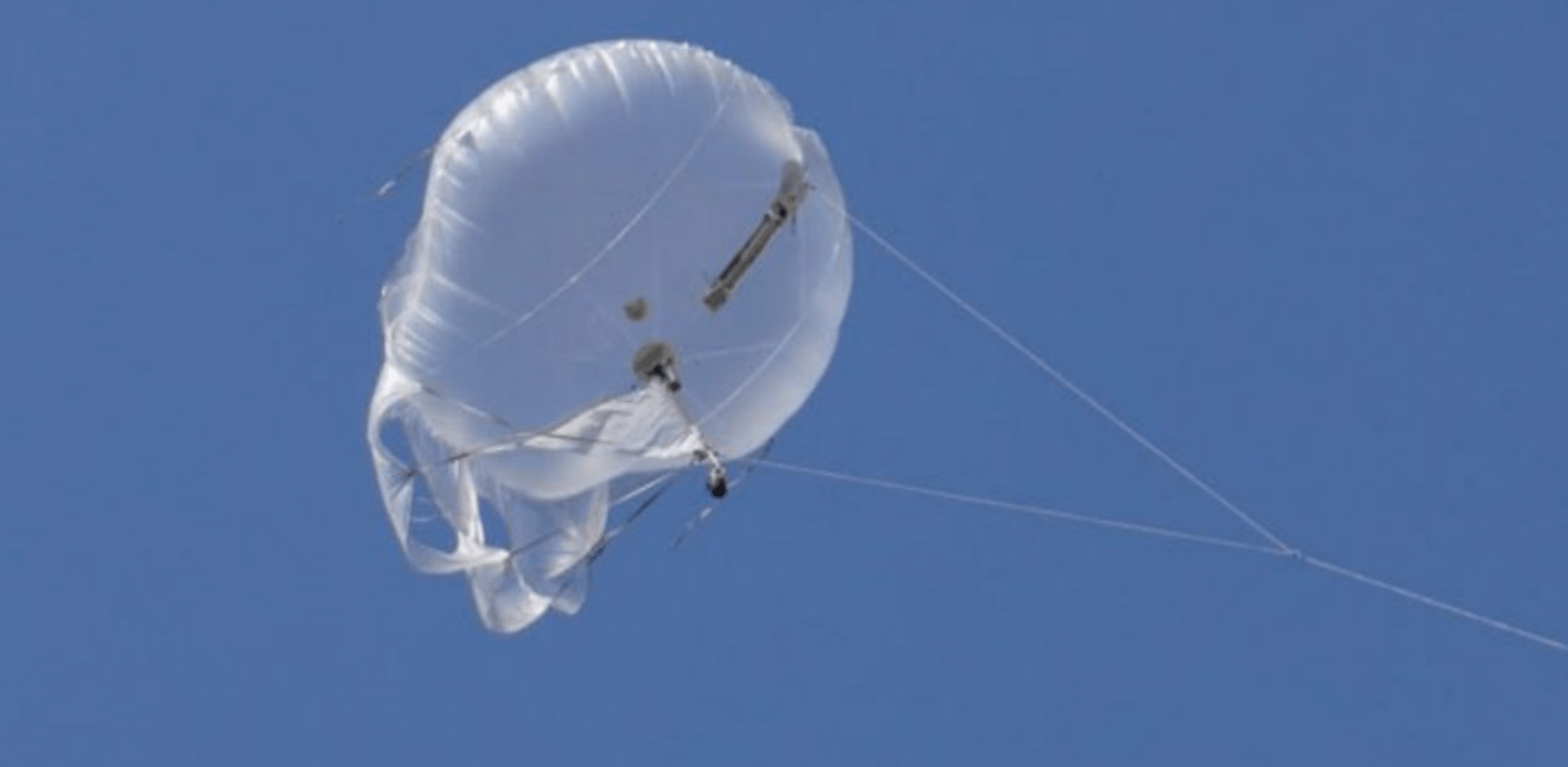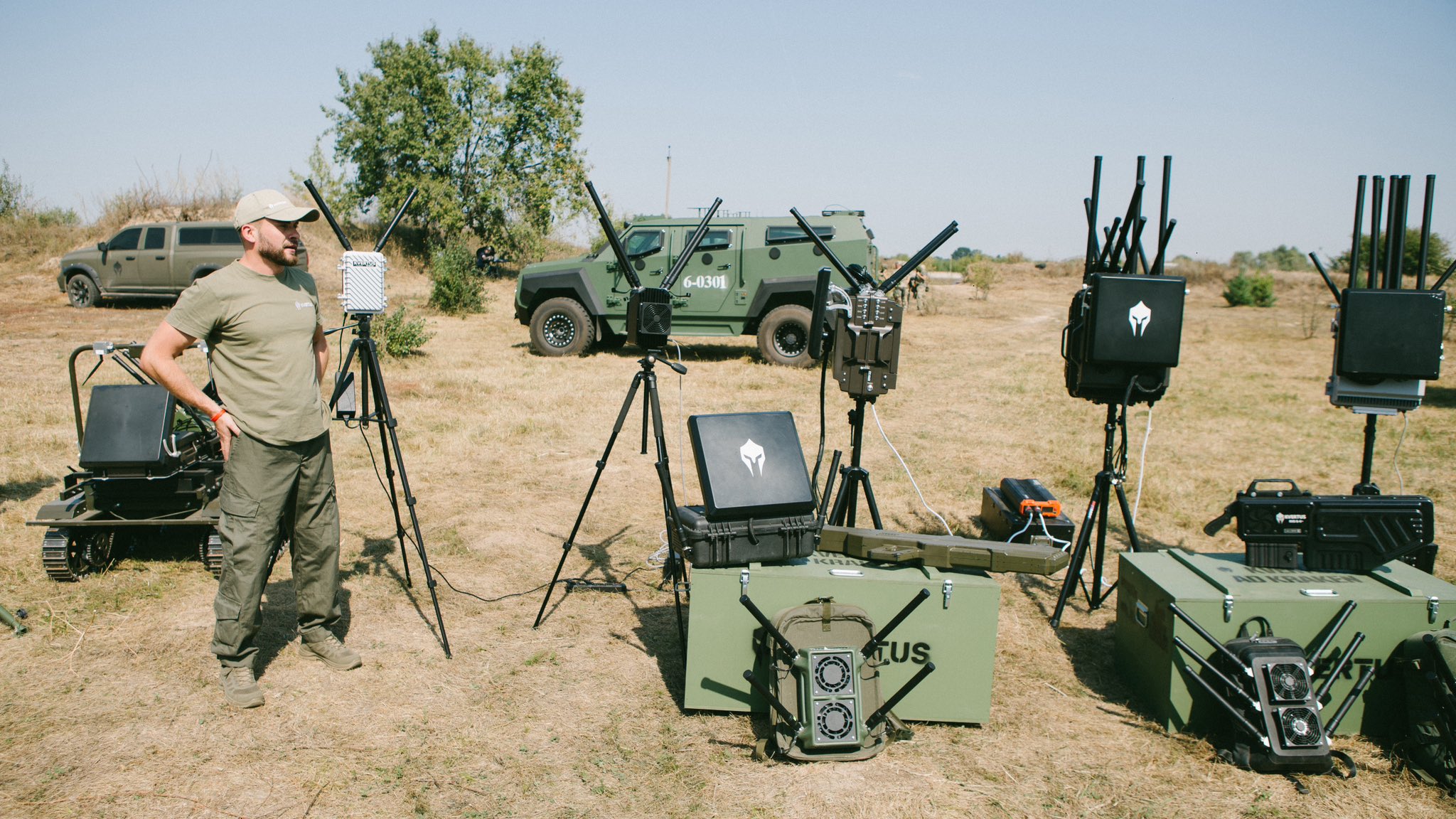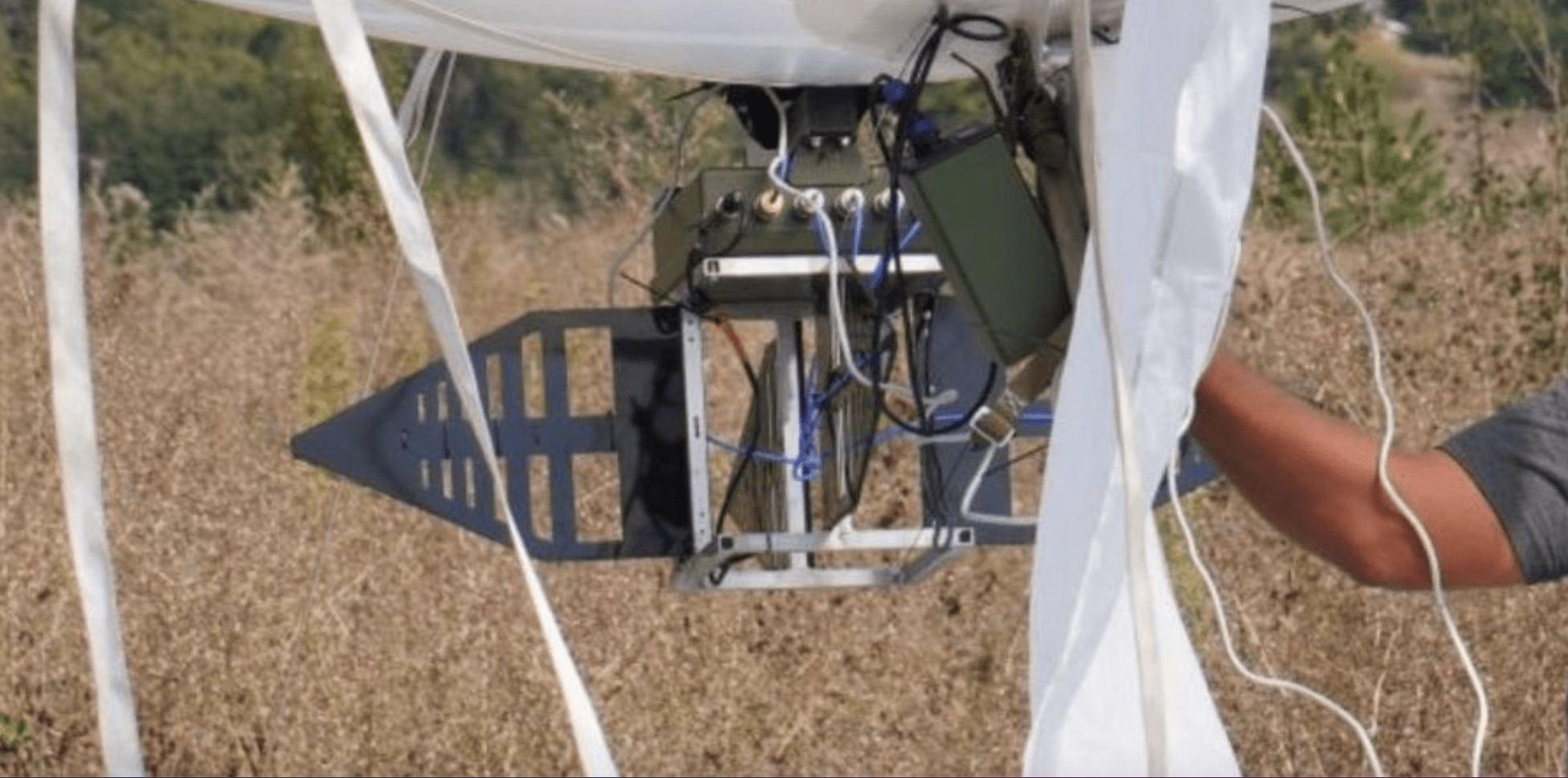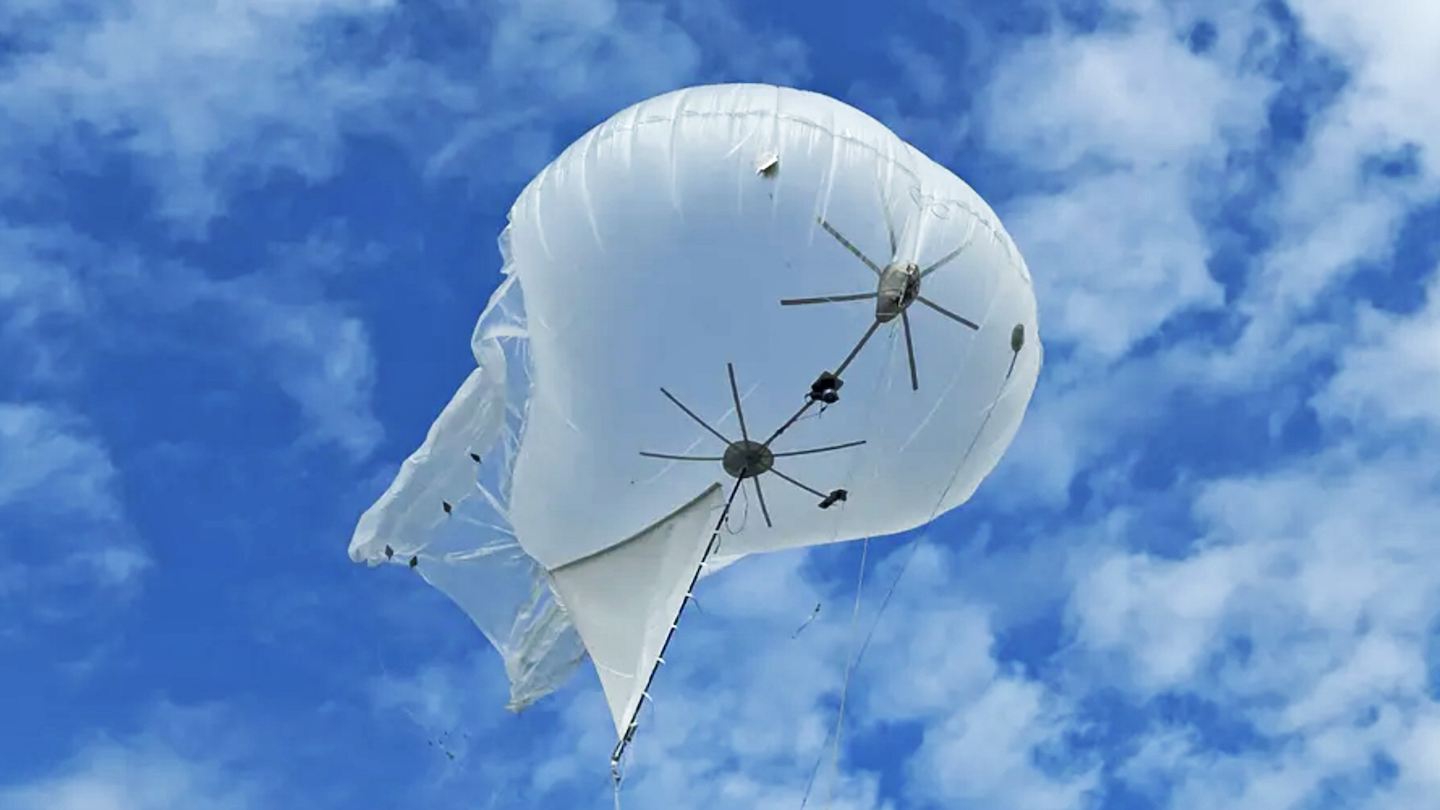Ukraine has developed a balloon-carried electronic surveillance system designed to detect enemy drone operators, which can then be targeted, offering a more comprehensive solution than tackling individual drones. While the current status of the system, known as Aero Azimuth, is unclear, its unveiling points to a resurgence in interest in elevated sensors mounted on aerostats.
Aero Azimuth was developed by the Ukrainian Kvertus company and was reportedly rolled out at a recent exhibition that the firm organized, focused on counter-drone technologies.

While the Azimuth system already existed in ground-based form, this seems to the the first airborne application, which makes use of an aerostat from another Ukrainian company, Aerobavovna. Also included in the Aero Azmiuth system are a trailer with a winch for launching and recovering the balloon, a gas cylinder system to inflate the envelope, plus tools for repair and maintenance.
The basic Azimuth uses passive signals intelligence (SIGINT) equipment to detect and then locate the radio-frequency signals emitted by enemy (Russian) drone operators. These signals include communication channels, telemetry, and data exchange. The information gathered by Azimuth is then related to troops, who can directly target the drone operators in question.
A previous video, which appeared in February 2024, showing Aerobavovna balloons developed for the Ukrainian military:

Kvertus has said in the past that Azimuth was developed to meet an urgent request from Ukrainian troops for a system that would provide them with advance warning of Russian drone activity, by detecting the drone operators at some distance — around nine miles, according to the company.
By elevating the Azimuth system on an aerostat, that detection range can reportedly be extended to 37 miles, while the same targets can be triangulated at a distance of 15-19 miles, according to Kvertus spokespeople. These figures are when the balloon is operating at “average flight altitude,” with the optimum altitude meanwhile reported as being around 1,000-2,300 feet.
Exactly how long the Aero Azmiuth is intended to operate for is unclear, but the helium-filled Aerobavovna aerostat that it uses is said to be able to remain aloft for seven days. It is also able to carry a payload of up to 55 pounds.
Reports claim that the Aerobavovna aerostat can withstand wind gusts of up to 50 feet per second and, due to the passive nature of its detection equipment, its likely tiny radar signature, and very limited movement, it should make a tricky target for air defenses.
On the other hand, it’s possible that the biggest threat to the Aero Azmiuth would be provided by the same drones that the balloon is expected to counter. Using a relay, Russian drones would be able to reach the aerostat even if it was located over a dozen miles from the front lines.
But for as long as it evades detection and attack, the Aero Azmiuth has the advantage of providing persistent coverage over a relatively wide area. It is reportedly also fairly inexpensive to procure. When operated in a network, especially when combined with other sensors on the ground, the Aero Azmiuth would form part of a system that provides even more extensive coverage as well as offering more resilience, with the loss of an individual sensor node being less significant.

The threat posed by drones of all kinds — but especially the fast-proliferating first-person view (FPV) types — is something that TWZ has repeatedly reported on in the context of the war in Ukraine.
For Ukrainian troops on the ground, operating at a significant numerical disadvantage compared to the Russians, including when it comes to drones, any means of helping address the drone problem is likely to be welcome. While there have been plenty of efforts to develop and field kinetic and non-kinetic counters to drones, as well as entirely passive defenses, Aero Azmiuth (and its ground-based version) have the benefit of alerting Ukrainian forces to drone operators, rather than individual drones.
In this way, it becomes possible to target a Russian drone operator, or battlefield command post that may be responsible for dozens of drones, if not more. Even the presence of Aero Azmiuth could be enough to force Russian drone operators to change their tactics, moving further away from the battlefield, which would decrease their effectiveness and could result in them having to rely on airborne repeaters. To avoid giving their presence away, Russian drone operators would also likely limit the amount of time their drones are in the air and the communications with them, further degrading their effectiveness.
At this stage, we don’t know for sure whether Aero Azmiuth has been deployed by the Ukrainian Armed Forces, but the technology would seem to be within reach. Last year, it was reported that the first mass-produced versions of the ground-based Azmiuth were likely to be ready by the end of December 2023.

Meanwhile, the use of balloons, in general, is not new in the war in Ukraine. The aerostats from Aerobavovna alone have reportedly already been used in roles including reconnaissance, signal relay, drone control, and carrying explosive charges.
Russia has a long history of using aerostats for reconnaissance and there have been repeated reports of Russian balloons equipped with radar and surveillance equipment being used in Ukraine, and also to monitor borders with NATO countries, notably Finland and the Baltics.
In the past, we have discussed reports of Russian balloons fitted with radar reflectors to confuse Ukrainian air defense systems, as well as Russian claims that Ukraine has used low-cost ‘balloon bombs’ to strike targets over the border, to give just two examples.
Intriguingly, U.S. officials have also talked in the past about Ukraine potentially receiving tethered aerostats with the ability to detect larger one-way attack drones, of the Shahed type.
Back in February, Gen. James Hecker, head of U.S. Air Forces in Europe (USAFE), as well as Air Forces Africa (AFAFRICA) and NATO’s Allied Air Command, said he was hopeful that aerostats of this kind would be “delivered” within six months to a year, as we reported at the time. “And now you get that for a long time, right? … it can stay up pretty much nonstop unless the winds get really struggling, and you may have to reel it down for a little bit.”

U.S. Air Force Gen. James Hecker, seen here speaking at the African Air Chiefs Symposium 2023 in Dakar, Senegal, on February 28, 2023. USAF
This kind of capability suggests a larger type of aerostat with a broader field of regard and longer range, but it also involves detection of the drones once airborne, rather than their launch sites. It was also unclear from Hecker’s statement if he was referring to a capability the U.S. military is planning to deploy in Europe or somewhere else, or something that might be happening elsewhere within NATO. Certainly, aerostat-based aerial surveillance systems as a part of national air defenses are currently seeing more uptake, as in the case of Poland, which you can read about here.
For now, it’s not clear whether Ukraine has procured the Aero Azmiuth or, in fact, whether it’s already been deployed. But its appearance is certainly reflective of the ever-broader range of measures being developed to counter battlefield drones as well as the increasing uptake of aerostats as a means of deploying sensors.
Contact the author: thomas@thewarzone.com
